Is Pressure A Source Of Gravity?
In a previous series of articles, I posed the question “Does Gravity Gravitate?” and explained how, depending on how you interpreted the terms “gravity” and “gravitate”, one could answer the question, either way, yes or no. This article will similarly treat its title question. :-)
To be sure, this case is a bit simpler than the previous one because there is only one term that can be given more than one meaning. The term “pressure” is clear: it means the spatial diagonal components of the stress-energy tensor. (More precisely, it means those components in the rest frame of the fluid, but we won’t delve into such technical details very much in this article.) The ambiguity is in the term “source of gravity”. What does that term mean?
The standard answer to that question in GR is that the source of gravity is the stress-energy tensor, the thing that appears on the RHS of the Einstein Field Equation. So anything that appears in the stress-energy tensor is a source of gravity. That seems to lead to a clear, simple “yes” answer to our title question: pressure appears in the stress-energy tensor, therefore pressure is a source of gravity. QED. (In the previous article, a similar argument leads to a “no” answer to its title question, since “gravity” itself–spacetime curvature–does not appear in the stress-energy tensor; it appears on the LHS of the Einstein Field Equation, not the RHS.)
Even though this answer is clear and simple, it is worth unpacking it a bit. This is done, for example, in the article “The Meaning of Einstein’s Equation”, by John Baez and Emory Bunn [1]. That article rearranges the equation somewhat to obtain an equation for the Ricci tensor, which has a simpler, more straightforward physical interpretation than the Einstein tensor (the tensor that appears on the LHS of the Einstein Field Equation) does. This rearrangement is similar to the one that was done in the second article of the previous series on gravity gravitating, and for the simple case of a perfect fluid, it looks like this:
$$
R_{0 0} = 4 \pi \left( \rho + 3 p \right)
$$
where ##\rho## is the energy density and ##p## is the pressure. Now ##R_{0 0}##, the 0-0 (or “time-time”) component of the Ricci tensor, describes, heuristically, how attractive gravity is; the more positive ##R_{0 0}## gets, the more gravity “pulls matter inward”, heuristically speaking. So positive pressure, just like positive energy density, makes gravity more attractive.
It is worth noting that this equation also explains why “dark energy” makes the expansion of the universe accelerate. Dark energy has the equation of state ##p = – \rho##, which, when plugged into the equation, gives ##R_{0 0} = – 2 \rho##. This is negative, meaning, heuristically, that dark energy causes “repulsive gravity” instead of “attractive gravity”; a uniform dark energy fluid does not pull matter inward, it pushes matter outward. Applied to the universe as a whole, this becomes accelerated expansion.
So we have our “yes” answer to the title question. But those who are familiar with the Einstein Field Equation for the special case of a static, spherically symmetric spacetime, as discussed for example in this Insights article, might have spotted what looks like an inconsistency. Let’s explore that.
For the case of a static, spherically symmetric spacetime, we can define a function ##m(r)## that, physically, describes the “mass inside radius ##r##” of a static, spherically symmetric body like a planet or a star. As was shown in the Insights article on this topic, this function turns out to be as follows:
$$
m(r) = \int_0^r 4 \pi \rho(r’) r’^2 dr’
$$
As was noted in that other article, this is a function of ##\rho## only. Pressure does not appear at all! What’s going on?
We can gain some understanding of this by looking at how we would construct this integral using our equation for the Ricci tensor above. This was done in the second article of the “Does Gravity Gravitate?” series, and as noted there, the result is called the Komar mass of the spacetime. For the case of a static, spherically symmetric body composed of a perfect fluid, the Komar mass inside radius ##r## looks like this:
$$
m_K(r) = \int_0^r 4 \pi \sqrt{J(r’)} \left( \rho(r’) + 3 p(r’) \right) r’^2 dr’
$$
where ##J(r)## is the “redshift factor” as a function of ##r##, i.e., the absolute value of the metric coefficient ##g_{tt}## in standard Schwarzschild coordinates.
Now we can see what is going on. Since we must have ##m_K(r) = m(r)##, the extra contribution from the ##p## term in ##m_K## must be exactly compensated for by the reduction due to ##J(r)##, which will be less than ##1## throughout the range of integration. Physically, this means that the extra attractive gravity due to pressure is exactly compensated for by the redshift factor, which, heuristically, captures the (negative) contribution of “gravitational potential energy” to the total mass. For the highly unrealistic but analytically solvable case of ##\rho## constant, independent of ##r##, in a spherically symmetric body like a star or planet, the cancellation just referred to can be mathematically derived explicitly, i.e., using the known solutions for ##J(r)## and ##p(r)## for this case, it can be shown that ##\sqrt{J} \left( \rho + 3 p \right) = \rho##. Several other static cases for which an exact cancellation can also be shown explicitly are considered in a paper by Ehlers, Osvath, Schucking, and Schang. [2]
[1] https://arxiv.org/pdf/gr-qc/0103044.pdf
- Completed Educational Background: MIT Master’s
- Favorite Area of Science: Relativity


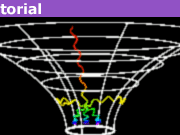
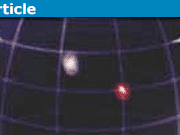
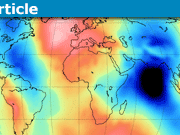
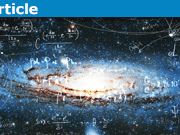
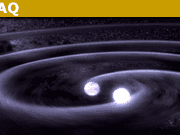
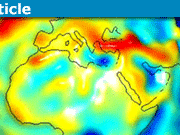


That's the sort of idea I have in mind
"
That's not at all obvious from your previous posts, either in this thread or in multiple previous threads where we have had a similar discussion.
"
I already know that Nordtvedt wrote papers which derive the gravitational linear induction effect
"
Then, if you want to discuss the topic further, please find one of those papers and post a reference to it in a new thread as a basis for discussion. Without a reference, further discussion of this is pointless, for the reasons already given, and further threads on it without references given will be summarily closed and warned.
This thread is closed.
If masses move, the metric changes, which changes local scale factors between coordinate and physical space. Depending on how the coordinate system is defined, a reference point can remain fixed, but other points which were at a fixed proper distance from one another may end up at a different coordinate distance from one another as a result of the moves.
"
In addition to the points I raised in post #25, there is the more general point, which has already been raised several times, that discussion should be based on valid references. This issue is not new; as you have pointed out, Tolman's paradox was first raised and discussed decades ago. So if physicists have not fully resolved the issue by now, we're not going to do so here. The best we can do is to base discussion on whatever valid references exist.
If masses move, the metric changes, which changes local scale factors between coordinate and physical space. Depending on how the coordinate system is defined, a reference point can remain fixed, but other points which were at a fixed proper distance from one another may end up at a different coordinate distance from one another as a result of the moves.
"
On its face, this seems to be arguing that coordinates can cause physical effects. Which is obviously wrong.
Or, alternatively, this could be arguing that there is in fact no physical effect at all going on–that the actual physical source of gravity does not change at all in the scenarios you describe–but that coordinate effects make it seem like something is changing, until we correctly take into account other coordinate effects that cancel that seeming change out. Which would be valid reasoning, but would also undermine your original claim.
I think that is already assumed as part of the general PPN equation of motion.
"
Then there should be a reference on the PPN equation of motion that shows it.
the obvious (at least to him) fact that when the material starts moving, the metric will start changing, which dynamically changes the mapping between points in the original local static physical space and coordinate space. That creates an effective relative acceleration between points in physical space and coordinate space.
"
If it's that obvious, someone would presumably have written a paper on it. If no one has, then maybe Nordtvedt should.
You mean that a proof that the GR pressure integral is equivalent to the Newtonian potential energy?
"
No, I mean a treatment of the same general type of scenario but using GR in a general stationary spacetime instead of Newtonian gravity. The Komar mass might be general enough, since it doesn't even require the stress-energy tensor to be that of a perfect fluid.
also available as an Arxiv preprint
"
Which is here:
https://arxiv.org/abs/gr-qc/0510041
the fully dynamic situation is still unresolved
"
In the sense that we do not have exact analytical solutions for the fully dynamic situation, yes, I certainly agree. But AFAIK, gravitational collapses of different kinds of objects have been numerically simulated, and these simulations have not shown any effects on distant fields due to the sudden pressure changes involved. I'll see if I can find a reasonably recent reference.
the pressure integral (negative normal stresses) for a static system is equal and opposite to the potential energy even in Newtonian gravity
"
Do you know of a reference that gives a general proof of this for the GR case? The only exact solution I have been able to find a proof for is the (highly unrealistic) constant density spherically symmetric case I refer to in the article. But as you note, it should be valid for any stationary spacetime (since those are the spacetimes in which "potential energy" has a well-defined meaning).
The article is not Baez's. Its Baez and Bunn's.
"
Yes, good point. I have updated the article to credit both authors.